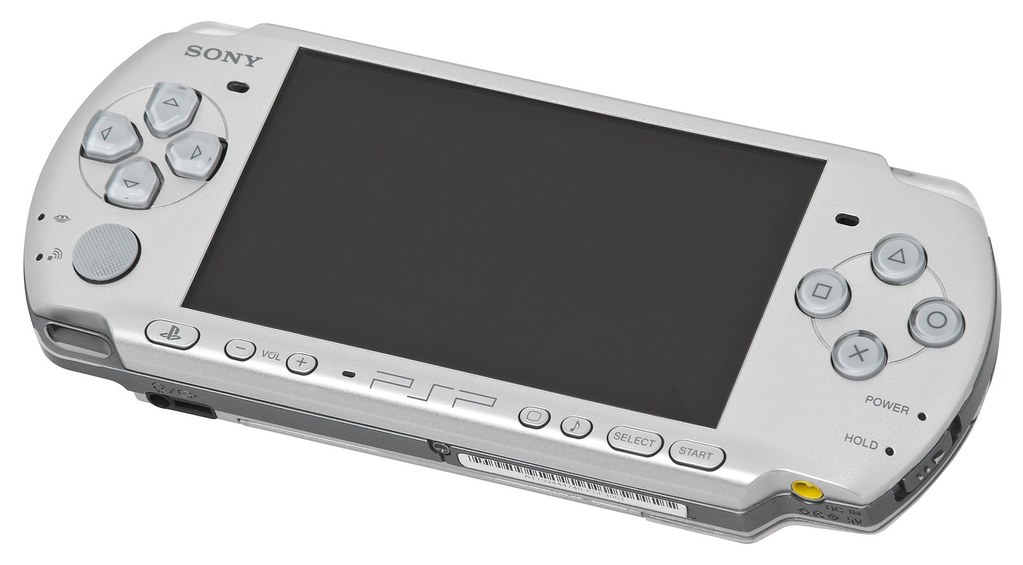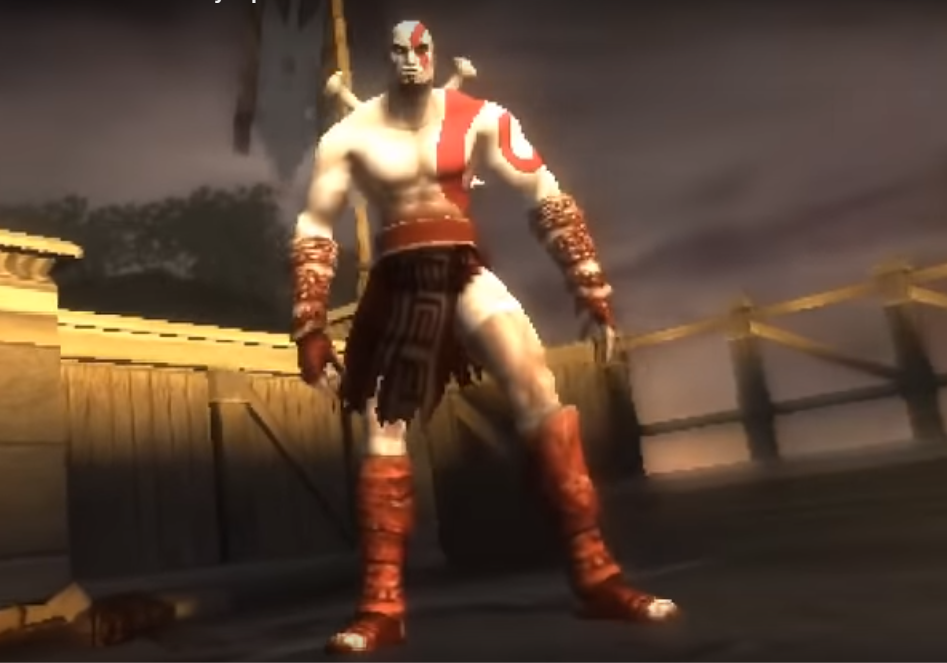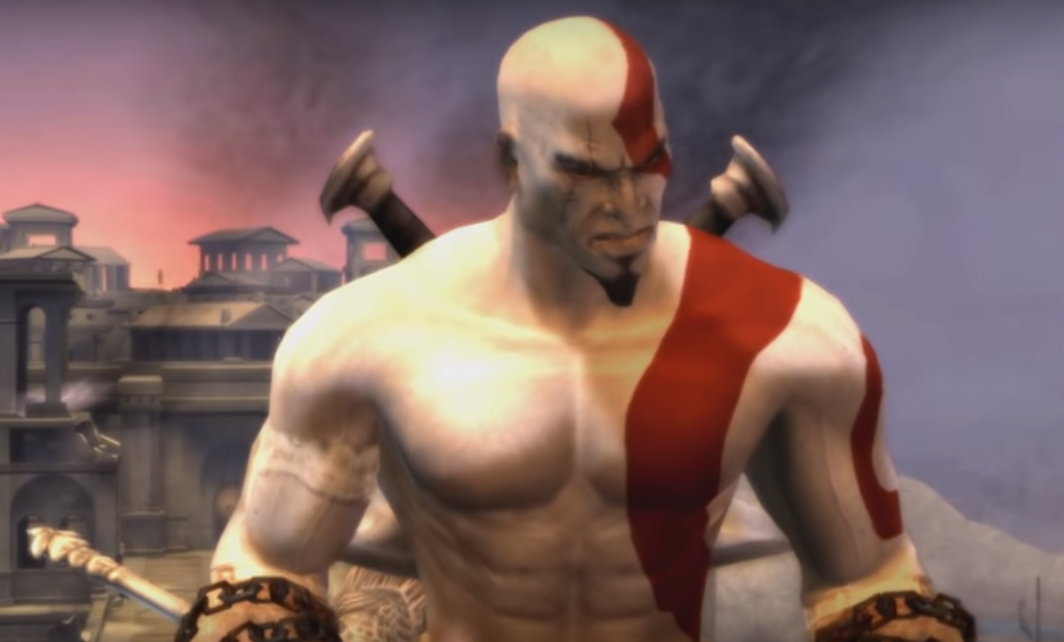It’s time for the next part of the “Summer of War.” This week, Henry Wolski looks at God of War: Chains of Olympus, the first spinoff of the series to land on the PSP. Will this smaller, self-contained adventure bring the goods?
Check out his thoughts on the previous games here:
Do you remember the PlayStation Portable (PSP)? It was Sony’s first crack at a handheld system to rival the Nintendo DS. It had a pretty long life, lasting from 2005-2014 in the U.S.

Over 1000 games were released in its lifetime, and many of the major Sony franchises got a chance to test out the hardware. This included games like Daxter, Grand Theft Auto: Liberty City Stories, Ratchet and Clank: Size Matters, Metal Gear Solid: Peace Walker and not just one, but two God of War games.
These games, Chains of Olympus and Ghost of Sparta, respectively, were critically acclaimed and sold big numbers for the system, as Chains of Olympus sold over 3.2 million copies worldwide following its release on March 4, 2008. The game also holds a 91 out of 100 score on Metacritic, making it the best-reviewed game for the PSP.
The process of getting a game with the scale and magnitude associated with the God of War series on a handheld was a tall task for the developers, Ready at Dawn Studios.
Running the game was so demanding for the system that the developers had to use the full 333 MHz processor of the PSP, as opposed to the usual restricted 222 MHz.
However, I played this game as part of the God of War: Origins Collection released for the PlayStation 3 and tempered my expectations due to never having touched a PSP. I didn’t know what to expect from the system, and I was pleasantly surprised at how authentically Chains of Olympus captures the God of War experience.
Undercover of the Night

The story of Chains of Olympus takes place five years into Kratos’ ten years of service to the gods (five years before the events of the first game).
He is still haunted by the visions and nightmares of his slaying of his wife and daughter and is growing tired of the god’s unwillingness to rid him of these visions. His travels take him to the city of Attica to kill the king of Persia. After vanquishing him and a deadly basilisk, he sees the sun fall from the sky as the world is plunged into darkness.
He travels to the Temple of Helios (the sun god) and finds out that the dream god Morpheus teamed up with an unknown partner to put the rest of the Gods to sleep and send Olympus into chaos, killing everyone on the planet, God and mortal alike.
After awakening the steeds of Helios, Kratos goes to the Underworld, fights Charon, the ferryman of the River Styx, and travels to the Temple of Persephone, queen of the Underworld and forced wife of Hades.
Throughout the game, Kratos sees his daughter Calliope guiding his path all the way to Persephone’s temple.
Kratos finds Calliope in the Fields of Elysium and is told that he can join her by giving up his powers. He makes this choice and shares a few nice short moments before Persephone’s true intentions are revealed.
Overall it’s a much smaller and more intimate story than the prior games, as you only travel to a few locations and the stakes, while high, don’t feel as epic as slaughtering Ares, Zeus or leading an all-out war on Olympus.
Another strange thing is the fact that you never see, let alone fight Morpheus, who puts the whole world to sleep offscreen.
My guess would be that either the team just didn’t have a good enough version of him to put in the game, or that he was cut altogether, since the game lost a lot of content during development, like a multi-player mode, more areas and more enemy encounters.
However, it is nice to see Calliope have a bigger role in a game, and the emotional beats surrounding her and Kratos’ reunion hit very well.
Another cool part of the story is how it fills in some gaps in the series’ lore, and explains why some characters Kratos meets in later games are hostile to his presence.
Chains of Olympus isn’t the most grandiose story, but it’s short and sweet and hits all the right buttons.
Pocket-Sized Destruction

Speaking of buttons, Kratos’ moveset is pretty similar to God of War I and II, as you have the Blades of Chaos at your disposal, slicing and dicing hundreds of undead soldiers, harpies, gorgons, cyclopses and minotaurs.
There are puzzles to be solved and magical powers to be learned. The Efreet sets all enemies on-screen on fire, the Light of Dawn blinds and stuns enemies and Charon’s Wrath, the most useful of these abilities, bombards enemies with a nasty green flame.
Quick Time Events during boss battles and crucial moments, climbing walls and swimming sections return and are as fun to do as they were on their console counterparts.
The biggest and most unique combat addition is the Gauntlet of Zeus, the weapon he used to defeat the Titans in the great war.
The gauntlet is found about halfway through the game and is required to break certain objects and enemy shields. It works well with charge attacks that do some big damage to enemies.
While they are sparse, the game has a few boss battles, and they are a lot of fun and offer some good challenges.
Other than that the game plays like it’s PS2 counterparts and the only thing sacrificed is the graphics, which look a little worse than God of War I’s.
It’s quite a leap going from God of War III to this game, as the textures all look rough and hard to distinguish. Kratos’ model suffers from a pretty big downgrade.
However, I can only imagine having the ability to get the full God of War experience on a handheld more than made up for the graphical shortcomings.
Never Break the Chain

Keeping in tune with the rest of the series, after beating the game you unlock a bunch of content, including the challenge rooms. These allow you to fight in a gauntlet of rooms with a specific goal to beat, such as beating a wave of enemies without taking a single hit. It’s very tough but enjoyable.
There are also the usual unlockable costumes (including Kratos as a potato) and some bonus behind the scenes movies.
The God of War series has always been great at including extra content at no cost. Players definitely get the most bang for their buck with these games.
Overall, God of War: Chains of Olympus is just more God of War, and that’s far from a bad thing.
While the graphics are pretty for the hardware, they aren’t much to look at today, and the game is relatively short. Besides the Gauntlet of Zeus, this game doesn’t introduce a lot of innovation to the franchise.
However, the mix of platforming and combat os still a fine-tuned machine that’s a lot of fun to play, and the story is a smaller scale adventure that still has a very nice emotional climax.
If you’re a fan and can’t get enough of the series, like me, try this one out.
I’d recommend just getting the Origins Collection, as next week I’ll look at this game’s sequel, God of War: Ghost of Sparta, which ups the ante on everything from Chains of Olympus.
Rating: 7/10
Henry Wolski
Executive Editor


